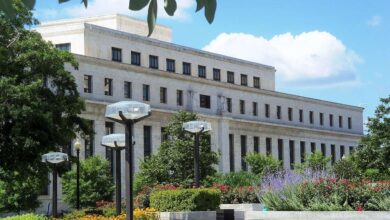Golden State in the Red

The Golden State of California is in the red. It surpassed a $12 billion deficit on May 13th. This comes as a major blow after California was recently ranked the 4th largest economy in the world, thanks in part to tourism, agriculture, shipping, and semiconductor manufacturing. According to the International Monetary Fund, California brought in $4.10 trillion in nominal GDP, below Germany and China. Despite this economic strength, a combination of President Trump’s tariff policies and escalating government spending has made matters worse. The Port of Los Angeles has been impacted by tariffs on China, with incoming cargo down 25%.
One of the ways Governor Gavin Newsom plans to address this growing deficit is through health care budget cuts. Primarily, he wants to cut new enrollment for Medi-Cal, the state’s low-income health insurance program. This follows the program’s 2024 expansion, which extended coverage to all low-income residents regardless of immigration status. However, it ran $6 billion over budget due to higher enrollment than expected of those without legal status. Starting in 2027, all Medi-Cal recipients will be required to pay $100 monthly premiums. According to the Governor’s Office, this is comparable to what individuals pay for subsidized health insurance plans. This is yet another reminder that anything the government provides is never truly free. This is also a warning against relying too heavily on public assistance. Government health programs aren’t immune to financial downfalls.
Newsom also wants to increase funding for Cal-Fire by reallocating $1.5 billion from the cap-and-trade program aimed at reducing greenhouse gas emissions. According to the governor, this will ensure that carbon emitters pay for the state’s wildfire response (an issue Newsom believes is exacerbated by climate change). It is also important to note that obsolete equipment and a lack of staffing are due to previous budget cuts. These made it harder to contain the Palisades and Eaton fires.
Newsom also issued two executive orders focused on cutting red tape to expedite the rebuilding efforts after the wildfires. Results have been mixed. In the Pacific Palisades, the Lopes family home now has a frame thanks to expedited permitting. However, the couple had to pay out of pocket for rebuilding while awaiting a payout from their homeowners insurance company. Other fire victims also blamed Trump’s tariffs for affecting their reconstruction efforts. General contractors stated that prices of construction materials such as lumber, steel, aluminum, and plywood have increased from 10% to 30%, making it difficult to provide estimates amid the ongoing trade war.
Another cost-saving measure on Newsom’s agenda would be to close an unspecified state prison by October 2026. Corrections and rehabilitation make up 5.5% of California’s budget. This is an estimated $150 million in savings. This is also partially in response to a decline in the incarceration rate by nearly 50% over the last 20 years. Is this really that much of a savings if we consider other costs associated with running a prison? Last year, the cost of incarceration reached a record high of $132,860 per inmate. Most of this money is spent on health care for prisoners and raises, including increased benefits for guards and doctors. The California Correctional Peace Officers Association, which represents prison guards, negotiated a three-year contract with 3% raises and benefits that will cost $1 billion. The Prison Doctor’s Union’s two-year contract includes 5.5% raises, and benefits are estimated to cost $234 million.
This also doesn’t account for Proposition 36, which is expected to increase the prison population. This proposition changes felonies and misdemeanors for crimes related to drugs or theft in three different ways. The first being that some misdemeanors could be classified as felonies. Previously, thefts of $950 or less were, in most cases, a misdemeanor. However, if the perpetrator has two more previous convictions for other crimes such as carjacking, shoplifting, or burglary, it will be classified as a felony, and he or she could serve up to three years in prison. Second, some felony sentences could be extended for up to three years if three or more people were convicted of theft or vandalism. Third, some felony sentences will have to be served in prison. Sentences for selling drugs such as fentanyl, cocaine, or methamphetamine could be extended based on how much is sold. Fiscally, this will increase both state and local criminal justice costs and the work of the state courts because felonies take longer to sort out than misdemeanors. This is estimated to cost tens of millions of dollars a year.
We have already seen the disastrous consequences of Trump’s tariffs, from stock market declines to small businesses suffering, and price increases on imports ranging from avocados to video game systems. It is also worth taking a look at how it affects state budgets, especially California, which is a high-tax, high-service state. In recent years, more Californians have been moving to states that are not as cost-prohibitive, such as Texas and Florida. California’s population decline was at a peak in the years 2020–23 when the state lost 412,000 people during the COVID-19 pandemic.
Tariffs, in addition to excessive government spending, are a deadly duo even for states with larger economies. Governor Newsom’s plan to cut spending in some areas while increasing it in others is not balancing the budget. If the Golden State truly wants to shine, no tariffs and fewer ineffective government projects would be a great place to start.
The post Golden State in the Red was first published by the Foundation for Economic Education, and is republished here with permission. Please support their efforts.



